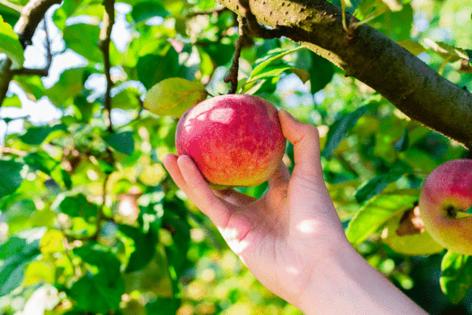On Nutrition: Preserving summer goodness
Published in Nutrition
After a long hot summer, we’re finally feeling the chill of fall. So the rush is on to get the last of the apples off the two trees in our yard before frost hits. I enlisted the help of my grandkids with an enticing offer of a prize to the one who bagged the most apples. It worked.
My neighbors have also been encouraged to pick as many apples as they can reach. And there will still be plenty to feed a few resident squirrels and the cute little bunny who has made herself at home under our shed.
To me, nothing beats the taste and texture of freshly picked anything … especially apples. According to data from the United States Department of Agriculture, one of my small but mighty apples provides almost 4 grams of dietary fiber plus important amounts of calcium, magnesium, vitamin C and other nutrients. All for about 75 calories.
Apples are one of the most common fruits around the world, according to a 2022 article in the Journal of Food Science. And these researchers provide evidence to suggest that an apple a day may truly keep the doctor away. Besides supplying natural energy, apples contain nutrients and other natural substances that encourage normal growth, bone health and resistance from disease.
Even the type of fiber in apples is “apeeling” … pardon the pun. Most (about 70%) of an apple’s fiber is the soluble type in the form of pectin. This type of fiber is known for its help with digestion as well as aiding in the control of blood sugars and cholesterol. Apples are also rich in what scientists call “bioactive compounds,” which work to prevent chronic inflammation that can lead to diseases like heart disease and cancer.
Now … how best to preserve the healthful yumminess of these sweet crisp beauties until my tree brings forth more apples next year?
I can start by keeping them cool. Apples last several times longer when they are stored in cold (not freezing) conditions rather than at room temperature, according to the Iowa State University Extension. Storing them in a perforated bag will also help preserve their taste and texture.
My neighbor makes applesauce with the fruit she gets from our trees. I’m not that energetic so I slice and freeze them instead. And to keep them from browning, here’s what the National Center for Home Food Preservation at the University of Georgia suggests: Dissolve 1/2 teaspoon ascorbic acid (aka vitamin C) in 3 tablespoons water. Sprinkle over the fruit and toss. Apples can also be blanched in boiling water for about a minute to stop the browning process.
I mix my apple slices with a bit of sugar and cinnamon before sealing them in a freezer bag. Makes great apple crisp. Or apple bread. Let the season begin.
©2024 MediaNews Group, Inc. Distributed by Tribune Content Agency, LLC.










Comments